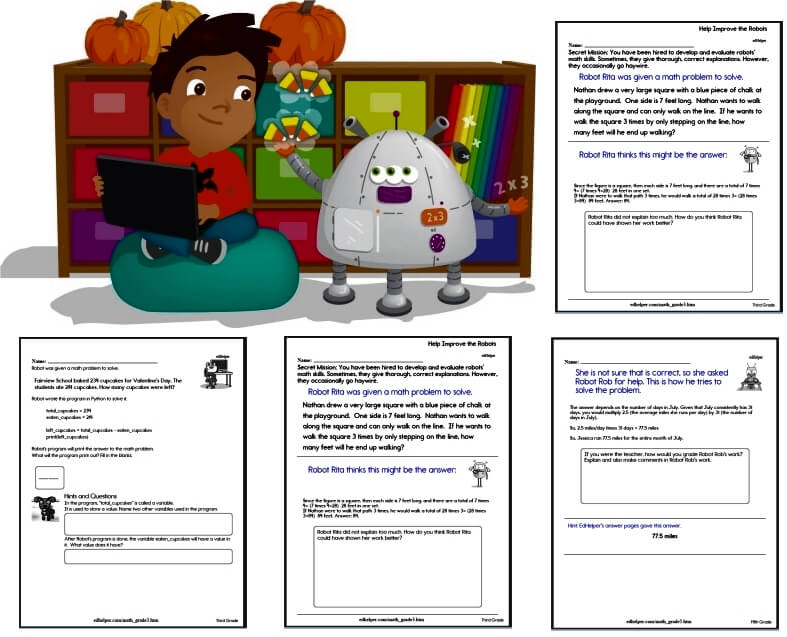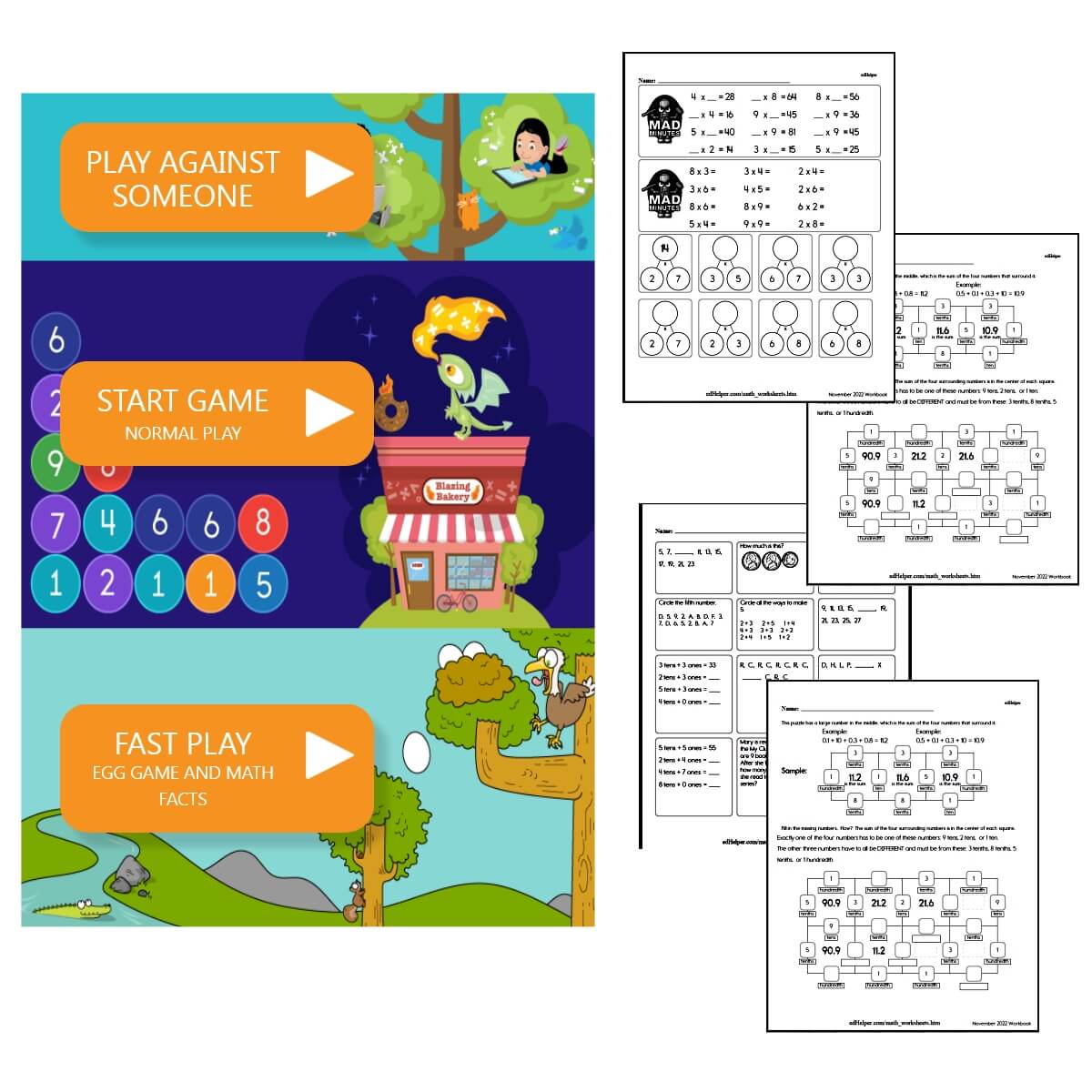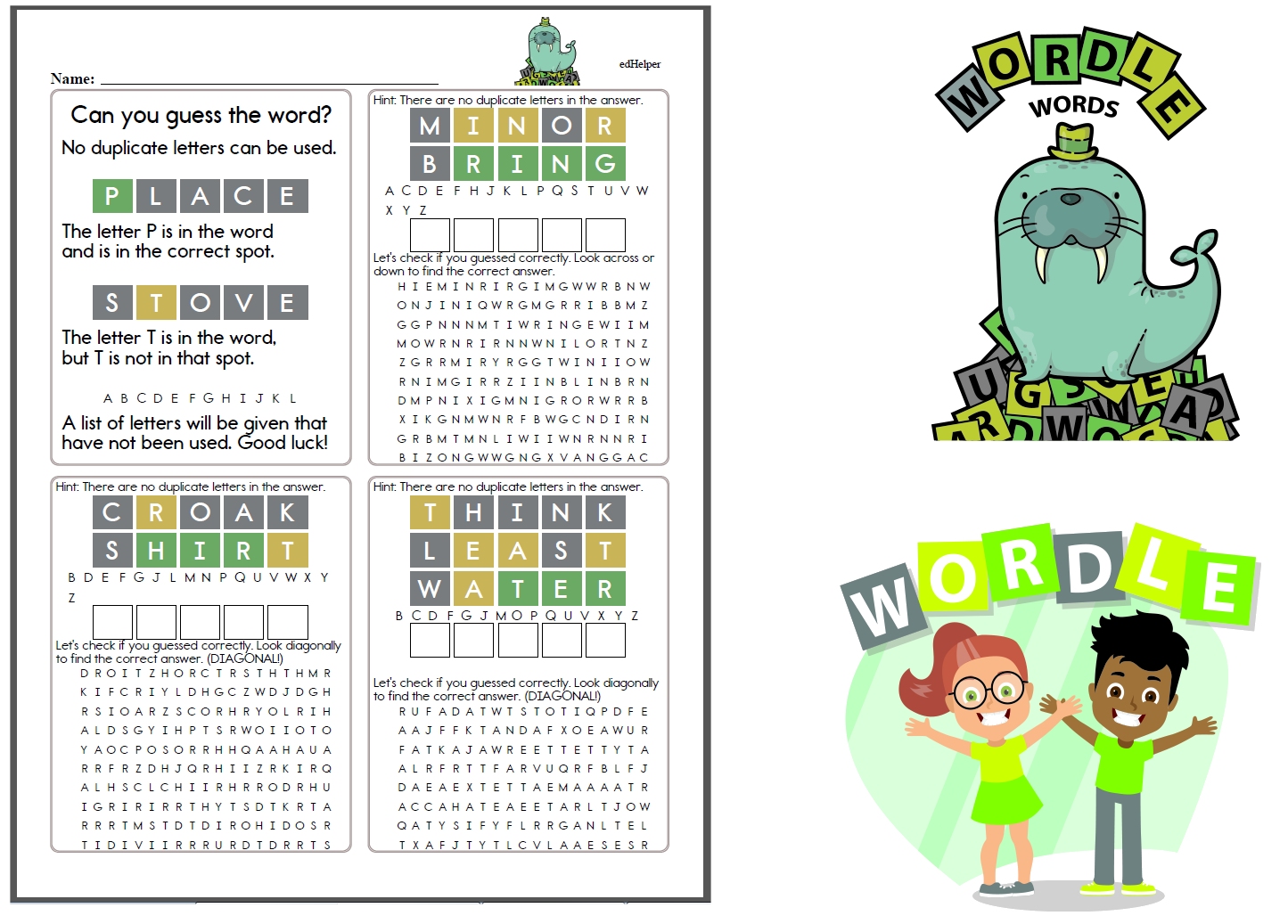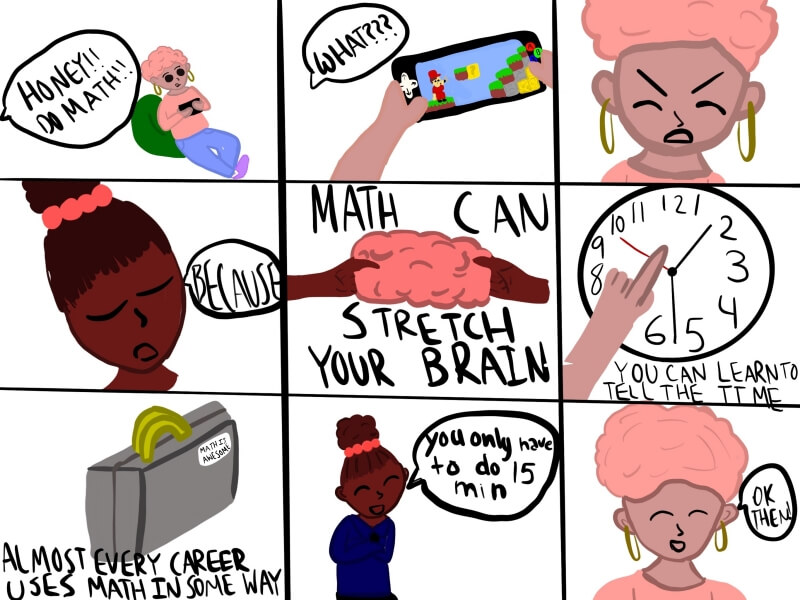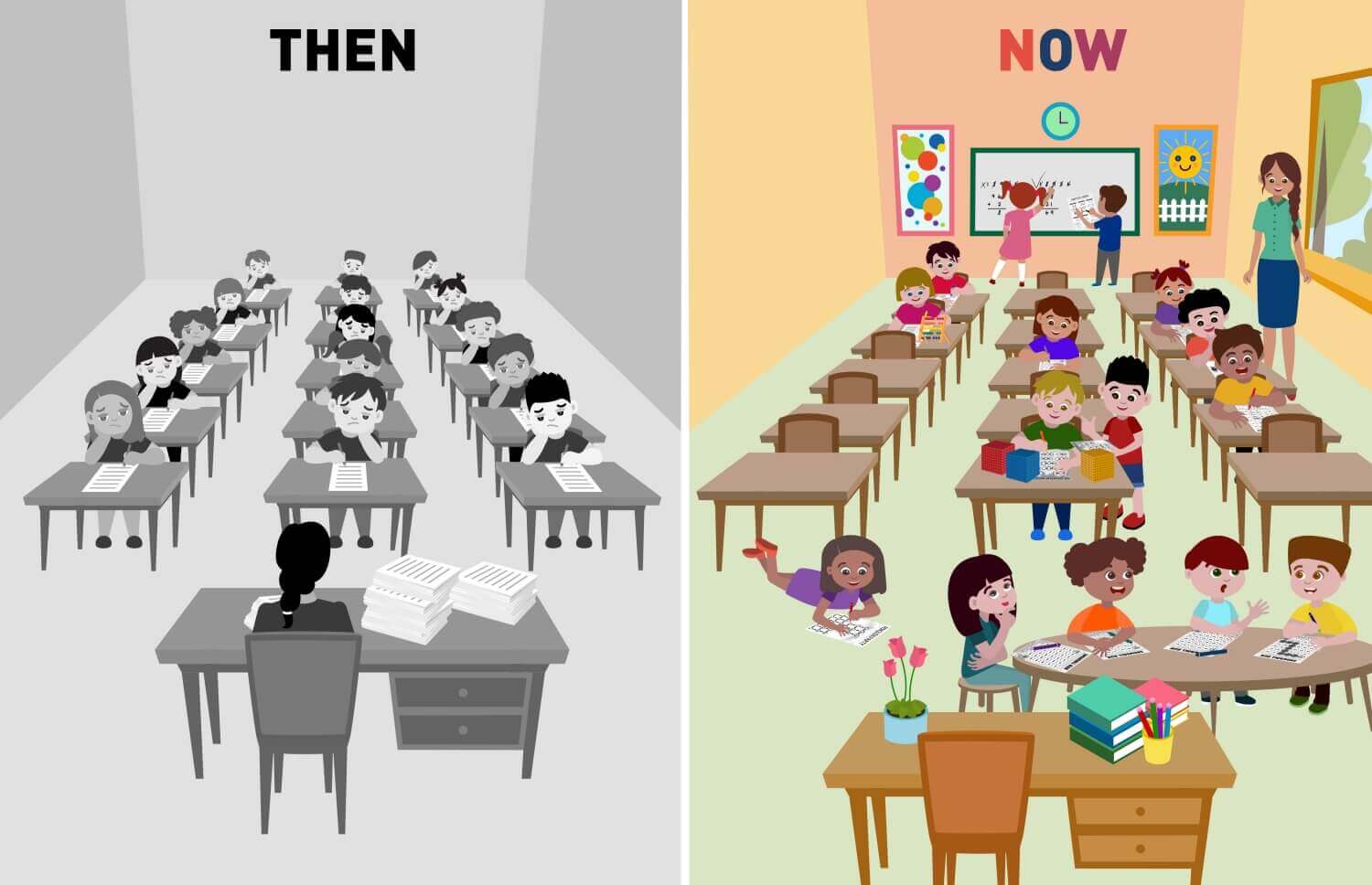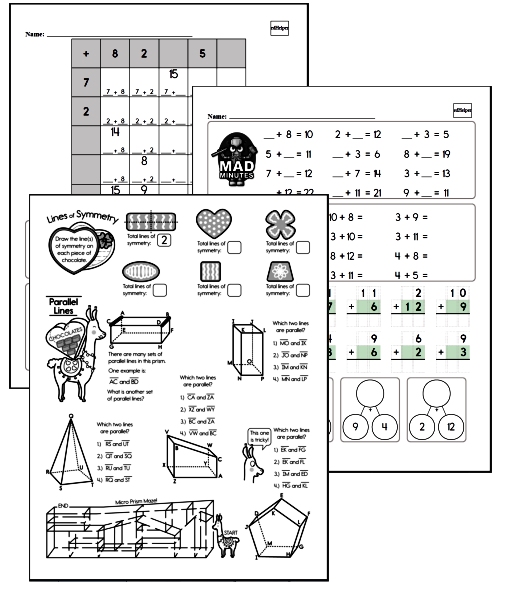10 Fun Ways for K-6 Teachers to Teach English Grammar [with Free Printables]
By: edHelper Staff
Updated: Jun 23, 2020
![10 Fun Ways for K-6 Teachers to Teach English Grammar [with Free Printables] 10 Fun Ways for K-6 Teachers to Teach English Grammar [with Free Printables]](https://imgs.edhelper.com/best-teaching-and-classroom-ideas/10-Fun-Ways-for-K-6-Teachers-to-Teach-English-Grammar-with-Free-Printables.jpg)
Grammar Instruction: Why it matters, how to teach it, and great grammar ideas that won't leave students groaning!
The excited teacher eagerly rushed to the door to greet her cheerful students. Please diagram that sentence. What was your first thought when you realized you were being asked to diagram the opening sentence of this article? Did your heart skip a beat, and did years of sitting at a hard desk with grammar worksheets instantly flash before your eyes? Maybe you had a moment of panic as you wondered if you'd even remember how to diagram a sentence and if you could recall all of the different grammar rules? All too often, this is what comes to mind when teachers think of grammar instruction.
While there are specific grammar standards for each ELA grade band, some teachers still struggle to teach them. In what feels like an already jam-packed day, many teachers feel there isn't enough time to add in this additional instruction. Couple that with the idea that most students loathe the idea of grammar and find it boring and purposeless, and you end up with a laundry list of reasons to skip it. But what if we could debunk the great "grammar is a lost art" myth and show our students that proper grammar still had its place?
English Language Arts Workbooks Worth Their Weight in Gold

Myth #1: There isn't enough time in the day to teach grammar.
Your day, and your lesson plan book, are filled with bell-to-bell instruction. It can seem hard to find time to squeeze in more. Rather than thinking of grammar as a separate list of standards to be covered, try thinking of grammar as the foundation of great writing. Incorporate grammar into all of the different ELA activities you're already doing.
Read Aloud
One of the best ways to model great grammar is through great writing. Students of all ages need to be read to often. Your students might not be able to articulate why a sentence is written the way it is, but they will be able to hear subject-verb agreement and other grammar rules and instinctively transfer that to their own writing.
Mini-Lessons
You don't have to block out large chunks of your day just for grammar instruction; instead, slip in mini-lessons and use mentor text from your literature. When you come across a passage with great descriptive language, pause and have a class discussion about it. Have a conversation about the way powerful adjectives allow the reader to see what the author is describing. Contrast that with overused words that are commonly used by students and challenge them to select strong synonyms instead.
Myth #2: Grammar is boring.
Taught in isolation as a list of rules, grammar can seem boring and intimidating. But this doesn't have to be the case! There are several ways that you can incorporate grammar work into your daily routines, and your students will actually enjoy it!
Grammar Games
A game may be a noun, but these grammar games come with verbs attached! Get ready to watch your students cheer, laugh, and smile as they review grammar concepts and rules.
Charades (with a twist!)
Bring your grammar instruction to life with a simple twist of the tried-and-true game, charades. Start by creating two sets of game cards. One set will list verbs; the other will list adverbs. The first student will select a verb and act it out for his team or class. After guessing the verb, the next student will select an adverb card. This student will now act out the original verb while doing what any good adverb does-modifying it! The original verb, for example, may have been "eating." If the second student selected the adverb "angrily," he or she would now have to act out eating angrily. This game not only helps to solidify the purpose and power of adverbs but has limitless possibilities for instruction and laughter.
Roll and Race
This grammar game is a quick and engaging way of reviewing parts of speech. Students can play with a partner or in small groups. Each group needs one game board and one recording sheet. Students take turns rolling the dice and making their way around the game board. Each time they land on a square, they must race to name a word that meets the criteria and list it on their recording sheet. The twist: they can't duplicate words that have already been used by themselves or by another player. The first player to make it all the way around the board is the winner. You can make this game as simple or as complex as you'd like. For younger students, start with just one part of speech. You can use the Name a Noun gameboard to help you get started. As students' understanding grows, add additional parts of speech and make the game more complicated.
Synonym Scramble
Do you have a list of boring, overused words that you are desperately trying to get your students to stop using? Let's mix those up with a synonym scramble. Create a set of game cards with some of the simple (aka, boring!) words your students continue to use in their writing. Pair each one with another, much more exciting game card containing a powerful synonym. Use these decks for quick rounds of Memory or Grammar Go Fish and help expose your students to better, more powerful words.
Crazy Phrasies
Are your students ready to get wacky? Have them use this list of adjectives and nouns to create some wild and crazy phrases. Take it one step further and have them add an illustration and a short description. This grammar worksheet is, in essence, the printable version of the "Try Not to Laugh" challenges sweeping the internet. Let's see if your students can create something wild and wacky and not smile. It's going to be tough!
Did You Know?
There are about 50 words that are commonly overused in writing and conversation. These creative worksheets help expose your students to a plethora of powerful words that they can use to enhance their writing. Try using one as bell work and then be on the lookout for the word appearing in your students' writing that day.
Role Reversal
It's time to kill two birds with one stone, but not literally! Don't worry; we're just using another idiom. In this engaging worksheet, students will first play the role of the teacher. Have them grab their best teacher grading pen and go to work looking for grammar errors in this essay. Then have them jump back into their student seat and answer the content questions.
Myth #3: Grammar skills don't transfer to the real world.
It is undeniable that most communication today is done via text. The use of grammar while texting does feel like a lost art with the majority of students substituting letters for words or using emojis and memes; however, that doesn't mean that grammar no longer has a place in the real world. Students need to understand and use proper grammar for college applications and cover letters that accompany their resumes when applying for jobs. They need to be able to communicate professionally with colleagues over email. They need the requisite skills to articulate ideas in work and research reports. Just like math (which is also frequently accompanied by the collective chant of "When will we ever need to know this?"), some grammar skills require structured practice. While grammar practice doesn't make perfect, it does make permanent.
Quick Self-check
Be sure to provide your students with opportunities to assess their own writing and check for grammar mistakes. Students will often catch easily overlooked mistakes when asked to re-read their own work, especially when reading aloud. They may not be able to pinpoint exactly what rule was broken, but they will know that something doesn't look or sound right and can fix it from there. Editing and grammar checklists can give your students a start when assessing their own work.
Partner Check
Likewise, partnering your students for peer evaluation is a quick but powerful way to reinforce proper grammar. This partnership will create collaborative conversations and provide another quick opportunity to learn from each other's writing styles, while simultaneously helping each other fix common grammar mistakes.
Fun fact
Grammar and boring are not synonymous. No matter what your students' groans may lead you to believe, learning grammar can be fun! There is a time and place for teaching grammar to your students. Ideally, the use of mentor text, rich language, and reading within the classroom will provide multiple opportunities for grammar instruction. These suggestions are perfect for helping students see why grammar matters and learn to use it well (not good!).
10 Things to Consider When Engaging Students in a Writing Program [with Free Writing Worksheets]
![10 Things to Consider When Engaging Students in a Writing Program [with Free Writing Worksheets] 10 Things to Consider When Engaging Students in a Writing Program [with Free Writing Worksheets]](https://imgs.edhelper.com/best-teaching-and-classroom-ideas/10-Things-to-Consider-When-Engaging-Students-in-a-Writing-Program-with-Free-Writing-Worksheets.jpg)

![10 Fun Ways for K-6 Teachers to Teach English Grammar [with Free Printables] 10 Fun Ways for K-6 Teachers to Teach English Grammar [with Free Printables]](https://imgs.edhelper.com/best-teaching-and-classroom-ideas/10-Fun-Ways-for-K-6-Teachers-to-Teach-English-Grammar-with-Free-Printables.jpg)

![10 Things to Consider When Engaging Students in a Writing Program [with Free Writing Worksheets] 10 Things to Consider When Engaging Students in a Writing Program [with Free Writing Worksheets]](https://imgs.edhelper.com/best-teaching-and-classroom-ideas/10-Things-to-Consider-When-Engaging-Students-in-a-Writing-Program-with-Free-Writing-Worksheets.jpg)
